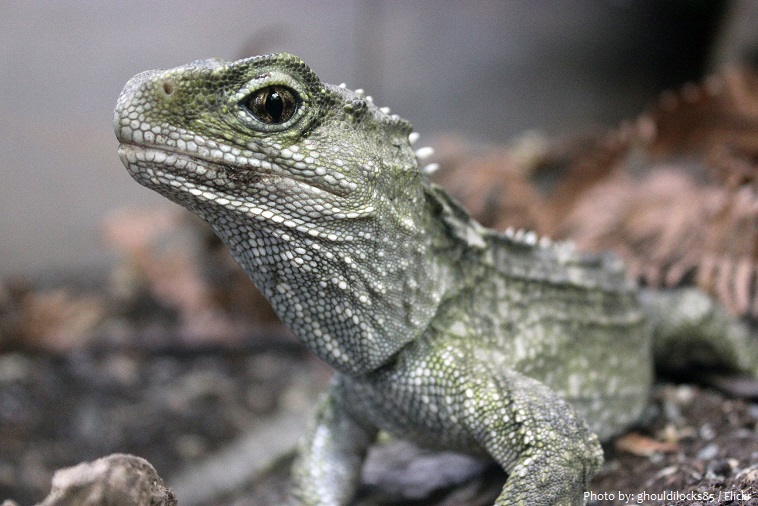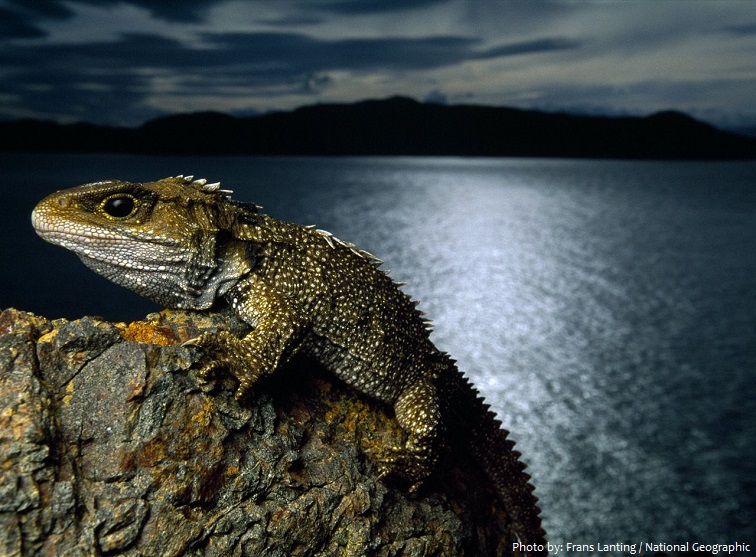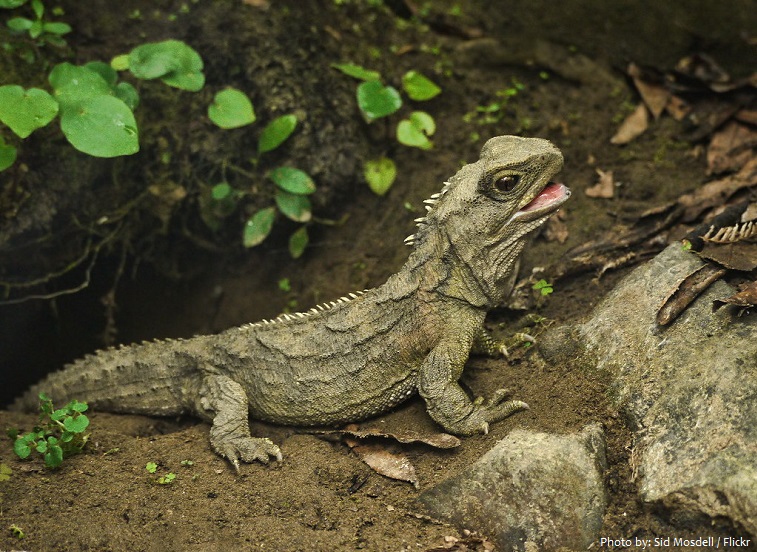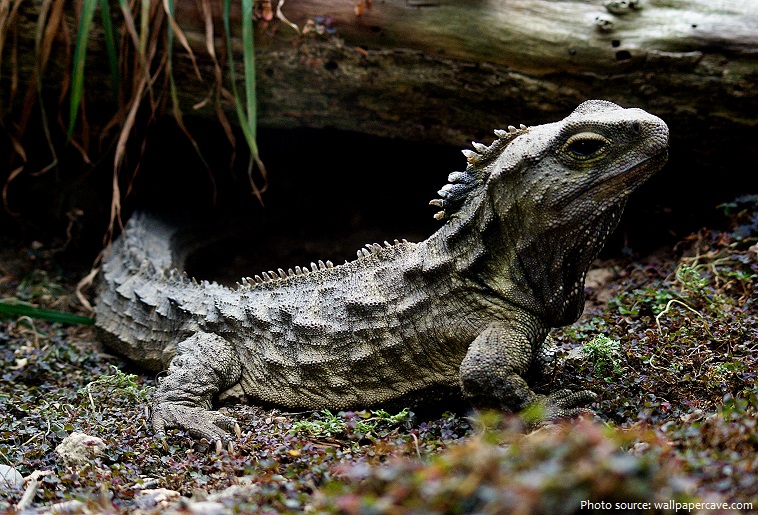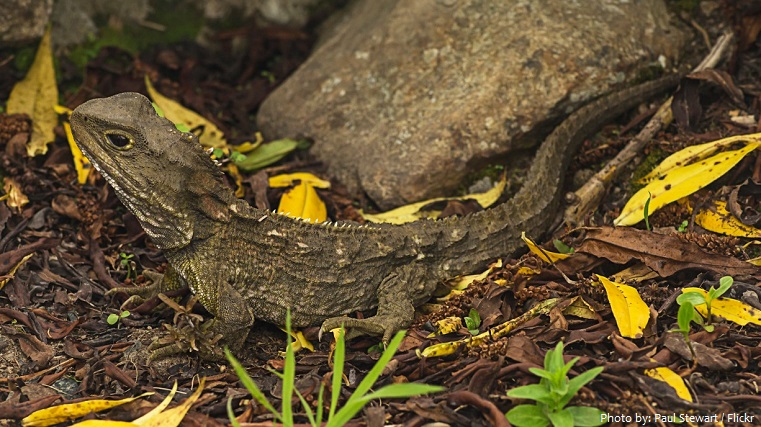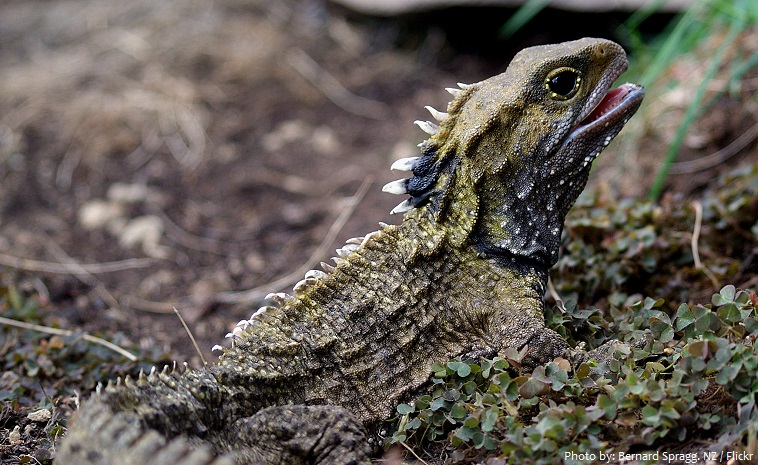Tuatara are moderately large lizardlike reptiles endemic to New Zealand.
Although resembling most lizards, they are part of a distinct lineage, the order Rhynchocephalia.
The order Rhynchocephalia, flourished alongside the dinosaurs in the Jurassic Age around 200 to 220 million years ago, until all but tuatara died out around 60 million years ago.
There are two species of tuatara: Sphenodon punctatus, or northern tuatara, and the much rarer Sphenodon guntheri, or Brothers Island tuatara, which is confined to North Brother Island in Cook Strait.
These two species, and possibly other now-extinct species, inhabited the main islands of New Zealand before the arrival of the Maori people.
Their name derives from the Māori language, and means “peaks on the back”.
The average lifespan is about 60 years, but they can live to be well over 100 years old. Some experts believe that captive tuatara could live as long as 200 years.
Tuatara probably have the slowest growth rates of any reptile, continuing to grow larger for the first 35 years of their lives.
Tuatara measure up to 80 cm (31 in) from head to tail-tip and weigh up to 1.3 kg (2.9 lb).
The color of tuatara ranges from olive green to brown to orange-red, and they can change colour over their lifetime.
Both male and female tuataras have a crest of spiky scales, called spines, down the center of their back and tail.
Their most curious body part is a “third eye” on the top of the head. The “eye” has a retina, lens, and nerve endings, yet it is not used for seeing. It is visible under young tuataras’ skin but becomes covered with scales and pigment in a few months, making it hard to see. The unique eye is sensitive to light and may help the tuatara judge the time of day or season.
They are able to hear, although no external ear is present, and have unique features in their skeleton, some of them apparently evolutionarily retained from fish.
Tuataras shed their skin once a year.
Like some lizards, a tuatara can regrow a lost tail.
While capable of digging their own burrows, tuatara often use those of seabirds such as petrels, prions, and shearwaters.
The burrow systems are often made up of a network of interconnected tunnels. Each tunnel may be several metres long and possess multiple entrances. Although tuatara are solitary and territorial, as many as five or six tuatara may occupy the same system.
Tuatara are largely, but not exclusively, nocturnal animals. They regularly bask during daylight hours at the mouth of their burrows. However, they become much more active at night, foraging in and around their burrows and interacting with other tuatara.
They eat mostly insects, especially beetles, but have been known to eat lizards, birds, and bird eggs.
Mating occurs in midsummer. In spring, females lay 6–10 eggs, which they bury for warmth. A year later, the hatchlings emerge and must fend for themselves. Hatchlings hide under logs and stones, and are diurnal, likely because adults are cannibalistic.
When tuatara eggs get too cold, their development stops until it gets warmer again. That’s why they take so long to hatch.
Like some other reptiles, such as alligators, the temperature of the nest where it incubated as an egg determines a tuatara’s gender. It has been found that a difference of just one degree centigrade can change the young in a clutch of eggs from all females to all males!
Tuatara were originally classified as lizards in 1831 when the British Museum received a skull.
They have been protected by law since 1895.
Tuatara, like many of New Zealand’s native animals, are threatened by habitat loss and introduced predators, such as the Polynesian rat.
They are sometimes referred to as “living fossils”, which has generated significant scientific debate.
Tuatara feature in some Māori creation stories, and some tribes believe they are the guardians of knowledge.
The tuatara was featured on one side of the New Zealand five-cent coin, which was phased out in October 2006.
